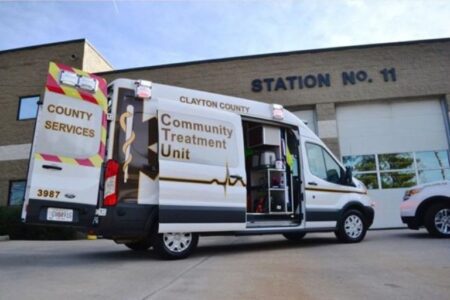As trends show temperatures continuing to rise, communities across the country are grappling with the increasing frequency and intensity of heat waves. In fact, NASA officially declared the summer of 2023 to be the hottest on record.
With the summer season front-of-mind for many people, the Biden-Harris Administration recently launched the Heat and Health Index (HHI), a strategic tool providing ZIP code-level data on heat-related health outcomes.
This initiative highlights the crucial role of data-driven approaches in protecting communities from extreme heat, echoing the insights and resources we’ve explored at ImageTrend.
Introducing the Heat and Health Index (HHI)
The HHI, as highlighted in the recent U.S. Department of Health and Human Services article, is designed to help public health officials, city planners, and policymakers identify and prioritize areas most at risk from heat, enabling proactive measures to safeguard vulnerable populations.
This tool combines historical temperature data, emergency medical services (EMS) data on heat-related responses, and community characteristics to provide a comprehensive heat-health index ranking.
The HHI will harness data from across the Federal government, including the National Emergency Medical Services Information System (NEMSIS), and will be updated periodically with the release of new data.
Insights from ImageTrend’s Recent Webinar
At the end of May, ImageTrend hosted a webinar titled “Heat and Health: Data on How Summer Heat Impacts Emergency Medical Service Resources.” This webinar, presented by our Research Manager and Epidemiologist Morgan K. Anderson, highlighted critical data on heat-related illnesses and their impact on EMS resources. Key takeaways from the webinar include:
- Incident Rates: Analysis of EMS data from 2019-2023 revealed trends in heat-related incidents, emphasizing the growing need for targeted interventions during high heat days.
- Demographics and Geographic Variations: Data showed that males and individuals aged 50 or older are particularly vulnerable, with significant geographic variations in incident rates.
- Impact of Poverty: Counties with higher poverty rates experienced disproportionately higher rates of heat-related incidents.
Enhancing Community Resilience with ImageTrend Collaborate
ImageTrend Collaborate™ is our research and analysis program providing vital insights into clinical, operational, and public health data. By participating in Collaborate, EMS agencies and public health officials gain access to comprehensive, aggregate, de-identified data essential for enhancing community resilience.
Our platform helps track public health issues by identifying trends in heat-related illnesses and other concerns attended by EMS, enabling targeted interventions to mitigate extreme heat impacts.
Additionally, Collaborate facilitates the analysis of EMS data, offering insights into call volumes, dispatch reasons, and patient outcomes related to extreme heat. This analysis can help agencies anticipate and prepare for increased demand during heat waves, ensuring efficient resource allocation and better patient care.
Collaborate supports the establishment of benchmarks for emergency response. By comparing data across regions and time periods, agencies can develop performance standards and best practices for managing heat-related emergencies.
This benchmarking improves resource allocation during heat waves and enhances overall operational efficiency, equipping EMS agencies and public health officials with the data needed for informed, strategic decision-making.
Collaborating for a Data-Driven Approach
The launch of the HHI tool by the Biden-Harris Administration aligns with ImageTrend’s goal to provide data-driven solutions for public health challenges. By leveraging the insights from ImageTrend Collaborate™ and the new HHI tool, communities can enhance their resilience against extreme heat. Some of these approaches include:
- Proactive Interventions: Use data to identify high-risk areas and implement measures such as cooling centers and public awareness campaigns.
- Enhanced Resource Allocation: Optimize EMS resources by anticipating increased demand during heat waves and deploying them more effectively.
- Community Collaboration: Foster collaboration between public health entities and EMS agencies to develop comprehensive strategies for heat-related health issues.
- First Responder Safety: Ensure first responders are aware of their own risk and take necessary precautions to protect their health when working during high-heat days.
Join the Conversation
Curious how your community can become more resilient against extreme heat? Our on-demand webinar provides valuable insights into how high heat days can impact EMS resources and offers strategies for collaborating with public health and community organizations to prevent heat-related illnesses and mortality.
Learn more about the impact of ImageTrend’s Collaborate™ program.




